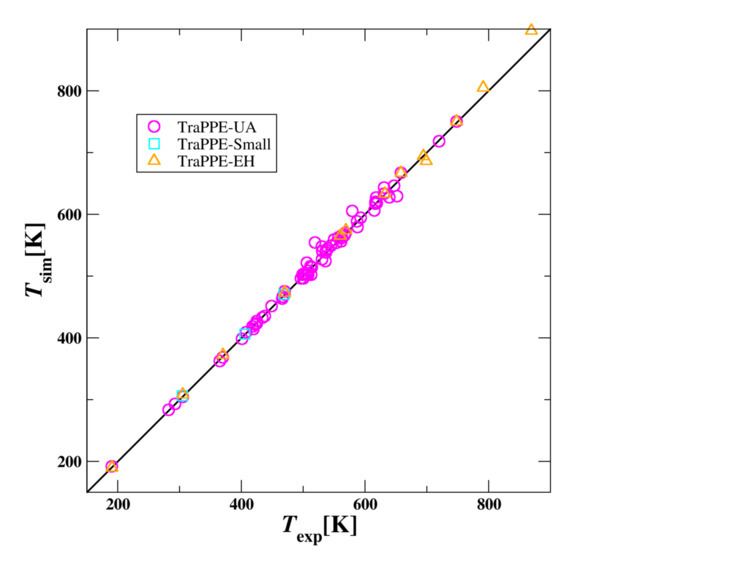 | ||
Transferable Potentials for Phase Equilibria (TraPPE) is a family of molecular mechanics force fields developed mainly by the research group of J. Ilja Siepmann at the University of Minnesota. The force field is parametrized against fluid-phase equilibria data with a strong emphasis on transferability. The term transferable implies that the same force field parameters are used to describe a given interaction site in different molecules (e.g., identical parameters should be used for the methyl group in n-pentane, 1-pentene, and 1-pentanol) and that the force field is applicable to predict different properties (e.g., thermodynamic, structural, or transport) across a wide range of state points (e.g., pressure, temperature, or composition).
Contents
Four major versions of the force fields exist for (mostly) organic molecules. They differ in sophistication: TraPPE-CG (coarse grain), TraPPE-UA (united-atom), TraPPE-EH (explicit-hydrogen), and TraPPE-pol (polarizable). Further, TraPPE-SM (small molecule) and TraPPE-zeo (zeolites) covers CO2, N2, O2, NH3, zeolites, etc. As of 2016, parts of the TraPPE force field are implemented in several software packages including Towhee, Materials Design, Culgi, and Scinomics.
Functional form
The basic functional form of the TraPPE force field is (for the united-atom version):
Some considerations regarding the model:
Parameter set
The parameters for the TraPPE force field can be obtained from the TraPPE website.
